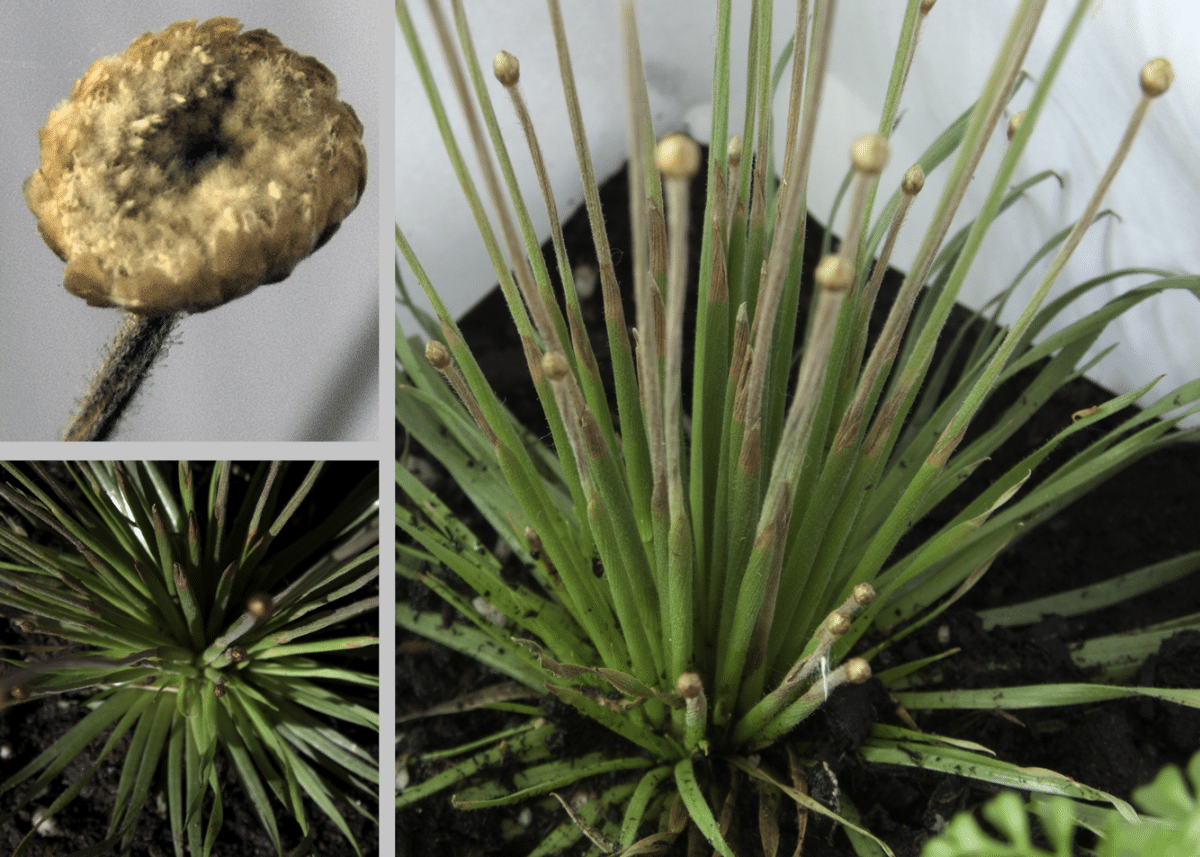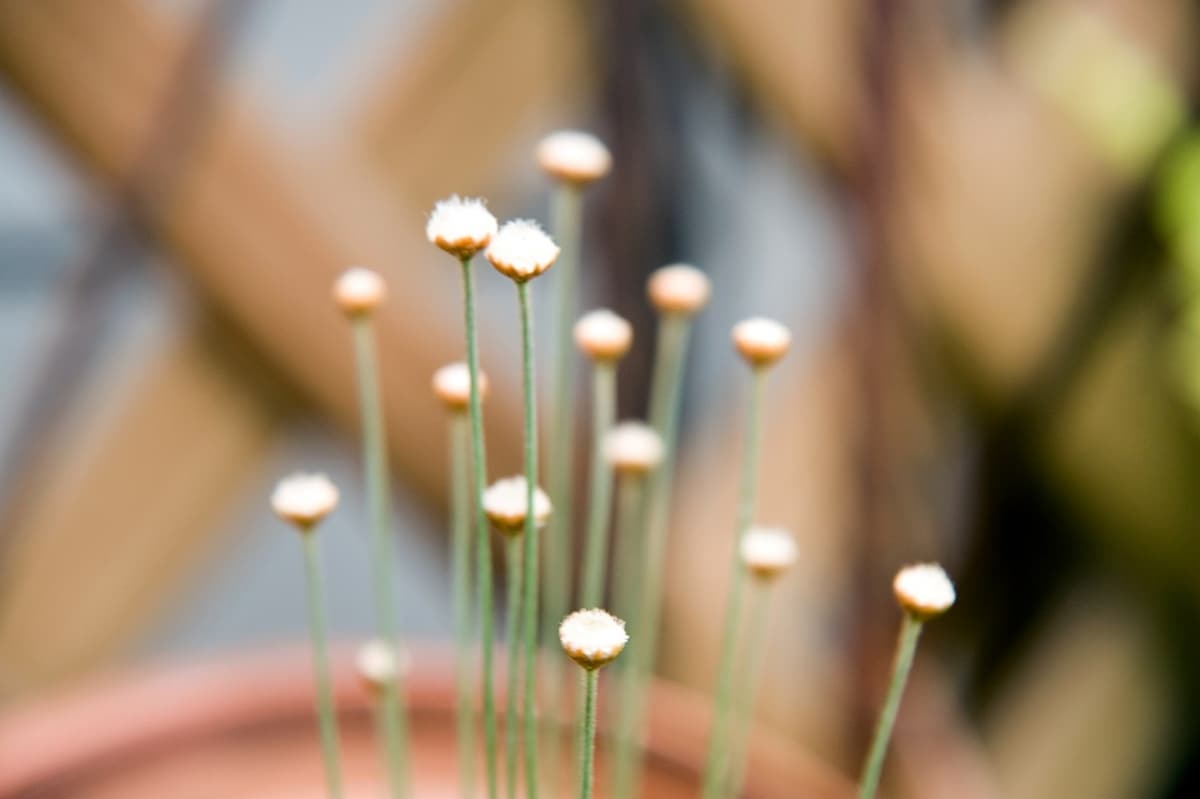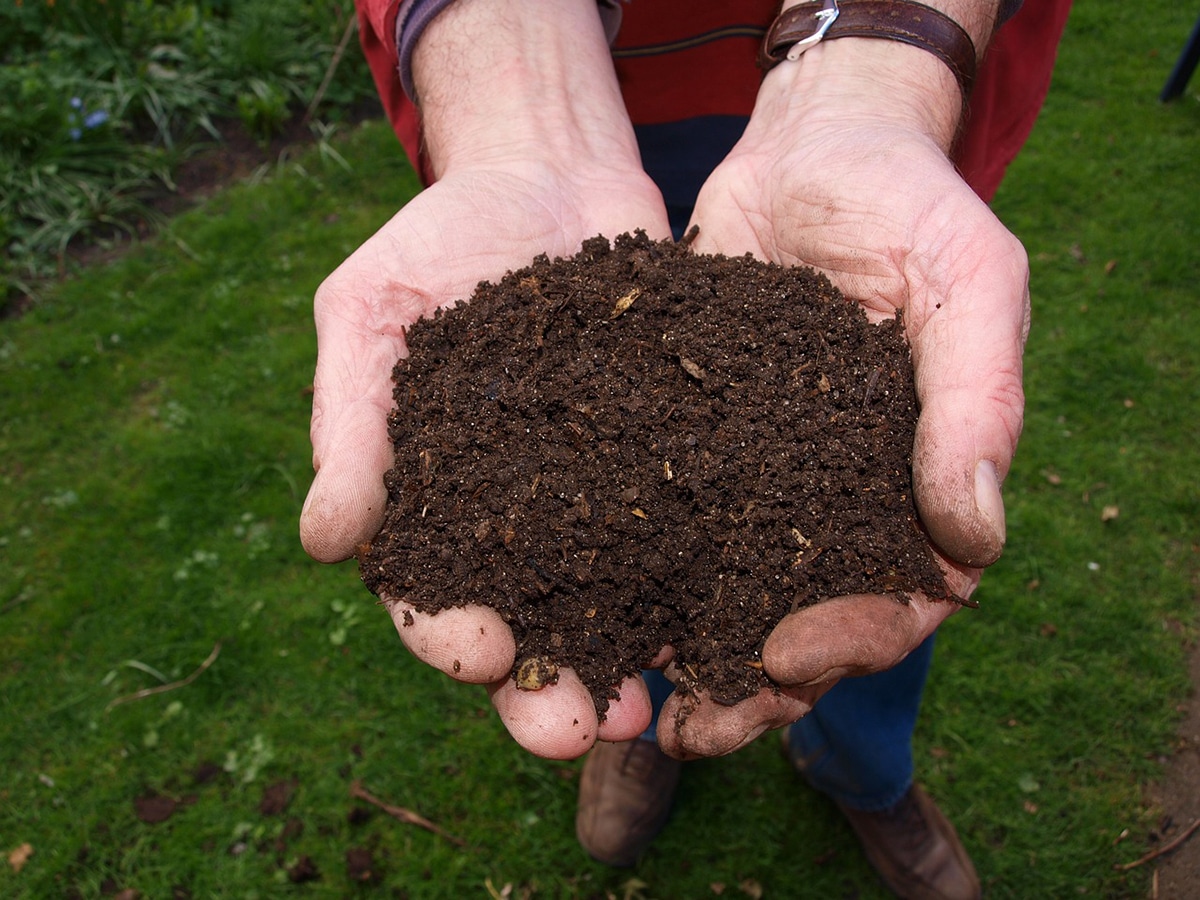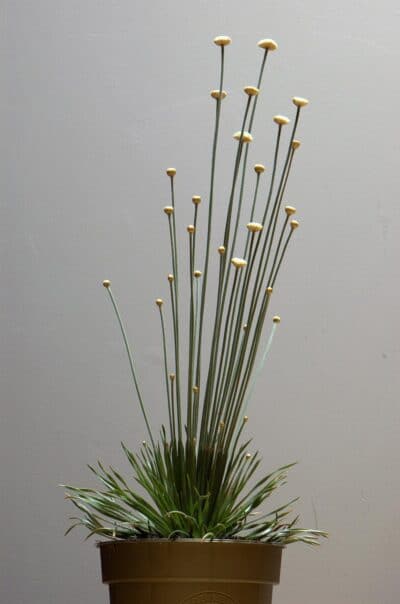
Image - Wikimedia / Th.Voekler
Plants do their best to adapt as well as possible to their respective habitats, but in doing so they often attract a lot of human attention. This is what happens with the mikado plant, a herbaceous species native to Brazil, where it lives in the tropical jungle.
It develops green leaves that grow to form a rosette, and from its center sprouts a flower stalk about 20 centimeters high, from the end of which sprout very small brown flowers that are grouped into a rounded, button-like inflorescence. Here we explain everything about her.
Origin and characteristics of the mikado plant

Image - Wikimedia / David J. Stang
The mikado plant, or simply mikado, is a curious herbaceous whose scientific name is Syngonanthus chrysanthus 'Mikado'. As we anticipated, it lives in the Brazilian rainforest, often near wetlands exposed to direct sunlight. When it is without flowers, it measures only about 15-20 centimeters, but when it blooms, its height can be doubled.
It has a rosette of basal green leaves, velvety to the touch, whose length is approximately 10 centimeters. And its flowers are brown, sprouting once a year, which in Spain coincides with spring.
The name mikado comes from a Japanese game that is played with very thin and long sticks, like the stems that the plant has when it blooms.
What is the care of the mikado?
It is a really curious plant, but also a delicate one. Because it is tropical, it should not be grown outdoors if the temperatures drop below 10ºC in winter, since otherwise it would not only stop growing, but could also suffer cold damage. So to avoid problems, we will provide the following care:
Location
The mikado plant It must be kept in a room with a lot of light coming from outside. But it is important that it is not placed in front of a window so that it does not burn, nor near the air conditioner, fans or anything else that generates air currents, otherwise the leaves would dry out.
If we live in an area where spring and / or summer are warm, with temperatures that remain above 18ºC, we can choose to have it outside, in semi-shade, during those months. For example, it can look very good on the window ledge, on a table that we have on the patio or terrace, or even planted in the garden as long as we plant it with the pot, so it will be very easy to take it out when the time cool.
Soil or substrate

It is a herbaceous that must be grown on land with a high content of organic matter, and that also allows the roots to grow well, without problems. For this reason, we recommend the use of a high-quality universal substrate, such as Flower (for sale here) or Fertiberia (for sale here).
Choosing the soil well will depend a lot on whether the plant survives or not, because if it is done badly, that is, if a very compact and / or heavy substrate is put on it, the risk of the mikado plant rotting is very high. , as the soil will need more time to dry than a lighter one.
Irrigation and humidity
Being a semi-aquatic plant it is important that you water frequently, but giving the substrate some time to dry a bit. That is, you do not have to water every day, but more or less every 2 or 3 during the summer, and once a week in autumn and winter. If it is outside and it rains or there is a forecast of rain, then we will not water.
Regarding the humidity, the mikado needs it to be high all year round.. Therefore, first of all it is necessary to see if in our area it is high, medium or low, for example with a home weather station or, if we don't have any, consulting a meteorology website (if you are in Spain, you can see the AEMET website). And if we see that it is higher than 50%, we will not have to do anything else; but if it is lower, we will spray the plant with distilled or rain water daily in summer, and in winter we will put glasses full of water around it.
Subscriber
The subscriber can be done during the months when the mikado is growing, which will vary depending on the climate and the hemisphere in which we are. But since it is a tropical plant, it needs heat, so we can assume that its growing season will coincide with the months in which the temperatures remain high, above 18ºC.
As fertilizers we recommend using organic products, Such as bat guano, the seaweed compost (for sale here), or cow dung. You just have to think that, if it is in a pot, it will be better to fertilize it with liquid products, always following the instructions on the container.
Transplant
It is a small plant, but you will have to change the pot at least onceAs it is usually sold in containers that are too small, and taking into account that it reaches about 15 centimeters in diameter, it is convenient to plant it in a larger one if it is seen with the naked eye that it can no longer grow any more in the one it has. This will be done in spring-summer.
Rusticity
It does not support temperatures below 10ºC, which is why it should be grown indoors in temperate regions, at least during the winter.

Image - Wikimedia / Jaspinall
What did you think of the mikado?